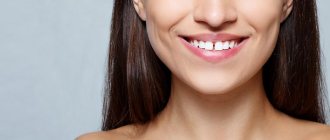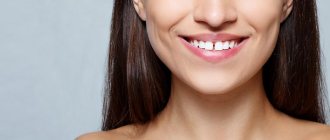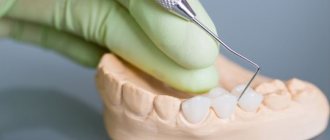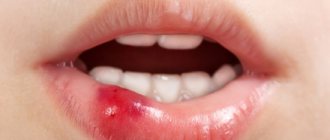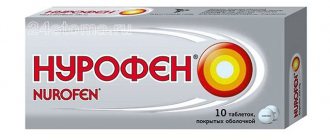Treatment with lingual braces, ceramic self-ligating and classic metal braces is accompanied by the same adaptation processes, which cause patients some discomfort. The head hurts, the jaws ache, the orthodontic arch rubs the mucous membrane of the cheeks or gums, the tongue is injured by the sharp corners of the locks, diction may be impaired and it will be difficult to pronounce individual letters.
This is a standard situation about which potential owners of braces are well informed. But few people know that the teeth will begin to loosen. Adults faced with such a problem panic: “ It takes so long to install braces in order to leave me without teeth?!” In fact, even this frightening symptom fits within the standard framework. What explains the unusual mobility?
Why does your face change after wearing braces?
The principle of operation of the braces system is that it gradually and forcibly moves the teeth in the required direction. Thanks to this process, you can correct the profile, correct the anomaly of an individual tooth or a whole row, and improve facial aesthetics. Already 8 months after wearing braces, the patient can notice how his face changes after braces.
Why do transformations occur?
- - increased tension, lengthening of ligaments;
- - decrease or increase in muscle tone;
- — transformation of bone tissue;
- - changes affecting subcutaneous tissue, fascia and the skin itself;
- — visual visibility of the bracket system itself.
The maxillofacial region is a single anatomical and functional system. If something changes in the bone structure, it is reflected in a person’s facial features. However, you should not assume that the changes will be as noticeable as after plastic surgery. In some patients, the transformation is practically not expressed, while in others it is too noticeable. Let us repeat that this is due to the nature and extent of the anomaly. At the initial consultation, our orthodontist will tell you about the features that may occur with your face, whether your face changes after wearing braces, and whether this may affect your particular case.
Transformations may also be due to the fact that the patient is forced to comply with certain dietary restrictions. In this regard, the face loses weight and the effect of “sunken” cheeks appears.
Restoration of diastemas with composite material
When all the teeth are in a normal position and the only concern is the distance between the front teeth, this can be beautifully, easily and quickly corrected with a composite material. In the patient's mouth for an hour and a half. This type of correction is called a filling, artistic restoration, or direct veneer. how it's done
- A composite material is applied to the lateral surfaces of the teeth without treatment, changing their shape and closing the gap between the teeth.
deadlines
- It will take one to two hours for both teeth.
pros
- This is the most non-traumatic
way to eliminate diastema. - The fastest way to close diastemas of all.
- Complete absence of dental treatment. No boron! Absolutely atraumatic for teeth and their nerves.
- No negative impact on the tooth and nerve.
- The likelihood of dental problems is the same as without intervention.
- The strength of the teeth is not impaired - you can bite off any acceptable food.
minuses
- We need a highly qualified dentist. With a lot of experience. Otherwise, closing the diastema will look like a filling and not an artistic restoration.
- The doctor must have a variety of aesthetic and proven materials available. To eliminate the defect beautifully and permanently. If performed poorly, the appearance of the teeth will not be ideal.
- When the distance between the front teeth is more than 2mm, the results are not always ideal:
In such cases, treatment with braces is more suitable. Or you have to use the lateral incisors. To prevent the central ones from becoming too wide: cost
- 6600-13200 rubles for one direct veneer. Depends on the scope of the intervention.
forecast
- When the work is done by a true master, composite veneers will last up to 10 - 16 years.
- Poor oral hygiene may require polishing. Once every two to four years. Takes 15-20 minutes. Costs up to 600 rubles.
- Due to the lack of treatment of the teeth, there is no effect on the nerve of the tooth. Therefore, there can be no complications.
What facial changes will occur after the bite is corrected?
After full or partial compensation of jaw anomalies, the face becomes proportional and symmetrical. However, some patients find these changes too pronounced. Transformations concern not only the oval of the face. They also affect the cheeks, cheekbones, nose, lips and chin. Let's consider all cases in more detail.
How do braces change a person's face?
- 1. Cheeks
. Before installing braces, it may be necessary to remove “eights” (“wisdom teeth”). In this regard, even before fixing the structure, it will be noticeable that instead of plump cheeks, sunken cheeks “appeared”. Also, when wearing braces, difficulties arise with chewing solid food. Dietary restrictions also affect cheek swelling. Typically, the slight hollowing effect persists even after the braces are removed. Almost all patients are satisfied with this effect. - 2. Cheekbones
. The muscle load is redistributed, facial expressions change, the cheeks become somewhat sunken, and therefore the cheekbone line becomes more pronounced. After correcting the abnormality, the muscles responsible for closing the lips face less stress. - 3. Nose
. When a patient wears external braces on the upper jaw, his nose becomes somewhat upturned. This effect gives the profile a special charm. However, it can persist even after the structure is removed. - 4. Lips
. While wearing braces, slight swelling of the lips may appear. But the effect disappears after removing the braces. - 5. Oval face
. When the upper jaw no longer protrudes, the face becomes longer and more oval. If before orthodontic treatment the lower jaw fell forward, then after removing the braces the face will appear smaller and rounder. This straightens the contour. - 6. Chin
. The shape of the chin may also change. If it has been smoothed, it may move forward, causing the profile to become smoother. If before installing the braces it seemed that the lower jaw was too massive, then after correcting this defect the chin will move back.
In order to better examine the described changes, patients take before and after photos. Thanks to a comparative analysis, it is easier to notice all the facial transformations and evaluate how much you like them.
Do you feel like your teeth are uneven?
Read more detailed information about the causes of malocclusion in the interesting material of an orthodontist, Ph.D. Gevorkyan T.V. " Eight Causes of Crooked Teeth in Adults
"
In conclusion, what is the best way to straighten your teeth?
As you know, there are several methods, but the main ones are braces, aligners and veneers. In the first two cases, we are really talking about correcting the bite, and veneers are, say, only cosmetic work. But the question still remains - WHAT to choose, what braces to put on? Or stick with aligners?
comparative analysis may come in handy
these methods of treating malocclusion. More than 70 parameters (!), but the material is very easy to read. And we hope it will help you make your choice.
For children
— the main methods of correcting malocclusion are plates, myofunctional trainers, functional devices and “2x4 braces.” You can read about the pros and cons of these methods HERE.
Will my face return to its previous shape after the braces are removed?
Installing a braces system allows you not only to correct dental abnormalities, but also to correct the proportions of your face. Most often, changes in the appearance of the face while wearing braces are quite minor and unnoticeable, and there is a possibility that all changes will remain after the braces are removed. Patients love their updated appearance. Seeing a changed face shape in the mirror and receiving compliments for a beautiful profile, they rejoice at such transformations.
The changes may seem unfamiliar at first. But in fact, a person sees the appearance that he would have had without a malocclusion and uneven dentition.
Features of proper care
To prevent teeth from deteriorating after braces, it is important to follow basic oral care rules. These are 3 key recommendations:
- Proper hygiene . If you have braces, then from now on you won’t be able to get by with just a toothbrush. In addition, special brushes, small brushes, dental floss and mouthwash are also used. It is also advisable to use an irrigator to wash the oral cavity. Such hygiene is necessary to prevent caries, so that teeth do not deteriorate.
- Power control . Braces are a fairly fragile structure that can be damaged by hard foods, such as nuts, crackers, hard cheese and others. Avoid such foods, as well as sticky foods. If a breakdown or deformation of structural elements suddenly occurs, you should consult a doctor as soon as possible. It is contraindicated to remove braces on your own.
- Examinations with a doctor . In addition to the emergency cases described above, you also need to regularly go to the doctor for preventive examinations. Most often this is once a month, but an individual schedule is drawn up for each patient.
Advice from the orthodontist at the clinic named after. Leonida Gorbunova
Our orthodontist's main advice is that you should not be afraid of changes in your facial features both while wearing braces and after they are removed. If there are any changes, they will be quite minor. Except in cases where the malocclusion was too pronounced, but in this case you will be pleasantly surprised by your new appearance (read the article Distal bite). Of course, we recommend sticking to your treatment plan and visiting your doctor as many times as he prescribed and exactly on the specified dates.
Posted by:
Ceramic veneers for diastema
The problem is eliminated for a long time. But they will require more financial and time costs. To correct a small gap, two veneers will be enough only for the central two teeth: For a large distance, you will have to make veneers for four incisors: how to do it
- The dentist treats the outer surfaces of the teeth. He takes impressions and fixes the veneers to the teeth at the next meeting.
deadlines
- On average 3-7 days.
- If necessary, while prosthetics are in progress, temporary veneers are made from composite material.
pros
- They do not require high manual skills and experience from the doctor as with direct veneers.
- There is less plaque formation on ceramics than on your own teeth. It will never change color.
- You can change the color of your front teeth - make them lighter.
minuses
- The outer surfaces of the teeth are completely processed. There is an effect on the nerve of the tooth.
- If teeth are restored with large fillings, crowns will have to be made.
- Ceramic is a fragile material, so you will have to avoid biting into overly dense foods.
price
- For one veneer from 16,000 rubles and above.
forecast
- Service life up to 10 - 16 years.
- If damaged, they are completely rebuilt.
Negative consequences of diastema
In addition to aesthetic discomfort and impaired pronunciation of whistling sounds, the gap between the teeth causes inflammation of the gums and periodontium in this area.
Due to injury while eating. This will lead to gradual exposure of the roots of the front teeth. A short frenulum of the lip causes a greater negative impact. If attached close to teeth. It has a constant traumatic effect on the gingival margin around the teeth, causing chronic periodontitis. Then exposure of the roots occurs with bone tissue atrophy. And fast enough.
Prevention of diastema in adults
The distance between the central teeth appears in adulthood. There are several reasons:
- partial absence of chewing teeth,
- their destruction
- severe wear of teeth or fillings.
Then the front teeth begin to take on more chewing load.
If they do not have time to wear off, then they become compensatory. Provoking tilting of teeth and the appearance of gaps between teeth. This can be prevented by restoring the chewing function of the lateral teeth, avoiding overloading the front teeth.
